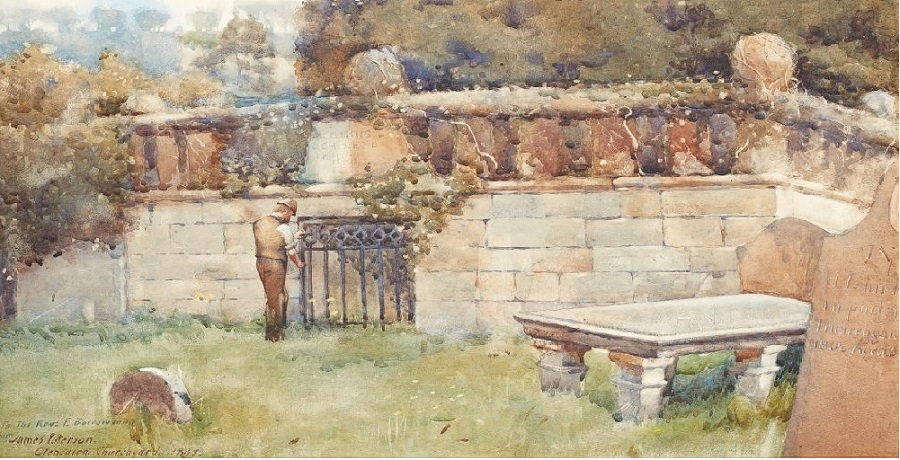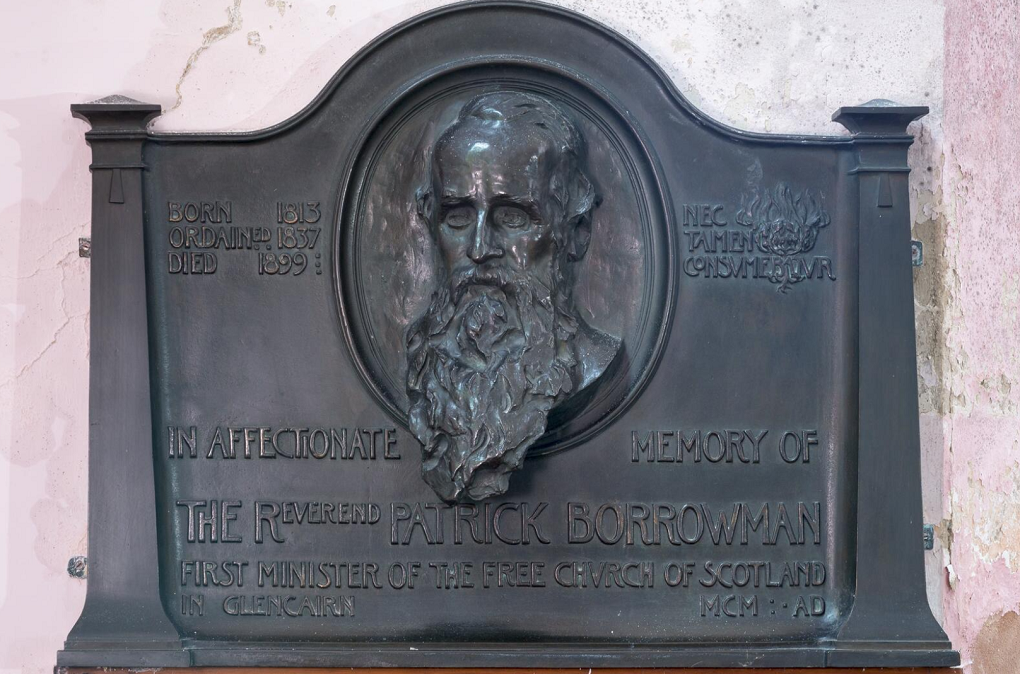Wee History of Glencairn Parish Church
Glencairn Valley, Kirkland, Scotland
Large, ancient, heaps of stones in the glen are called cairns. They gave birth to the name Glencairn.
The Glencairn Valley lies on the border of Dumfriesshire, close to the mountain range that forms a natural boundary with thriving hamlets + villages and is traversed by the river Cairn that is formed out of three streams well-stocked with trout and might well engage the brush of the painter or the pen of the poet.
The Glencairn Valley is highly fertile with rich grasslands that extend far up the hillsides. Farmhouses and tidy cottages peep out on every side, while stately mansions embowered amid sheltering woods, imparts dignity. The scene promises a feast of beauty that will linger long in one’s memory.
The Glencairn parish boasts Bonnie Braes of lush, green hills from base to summits with altitudes up to 2,000 ft. and has the finest walks in the world to view cute Black-faced + Cheviot sheep, Belted Galloway + Highland Coos, Pheasants + Grouse & Jack rabbits.
The middle glen is richly wooded since the 1600’s and stocked with wild Red deer. It’s there where former Lords of the land left stately, grand, high-pitched homes and castles ringed with Lilies, Bluebells, Forget me nots, Poppy, Roses, Tulips, Primrose, and Thistle.
Truly, Glencairn is a land of romance and of beauty, a land to reverence and to love. There is no fitter example of the power of Nature.
“Glencairn impresses with quietness and beauty, and so feeds with lofty thoughts.” – Wordsworth

Glencairn Parish Church
The grandiose Glencairn Parish Church is in the Cairn valley hamlet Kirkland, which means “Church Land”. It anchored the hamlet that offered a blacksmith for parishioners to fix their buggies and horse hooves while in service. A thirst-quenching whiskey pub and a sparkling, spring-fed well for refreshing the congregation and livestock.
This Gothic church is an impressive A-listed building within the British Empire and therefore in rarified ere of world-famous architectural sites such a West Minster Abby, Windsor Castle, Buckingham Palace, and Edinburgh Castle.
The Kirk has this prestigious distinction for multiple reasons. First, it is the only Scottish church with a square footprint that forms an equilateral cross. Hanging in the belfry of the 70 foot tower since 1836 is the 1611 cast bronze bell removed from the original Glencairn Kirk and recast in 1789. It still calls out over the whole valley. The exterior masonry walls are dressed in the art of “Rubble stone” and “Ashlar stone” styles. The interior is over-sized to impress, seating an astonishing 1030 people, who are most certainly spiritually moved by the Victorian coloring and the 20’ tall, fired, leaded, stained-glass window by Abbey Studios.

Glencairn Kirkyard
In 670 Saint Cuthbert preached on the Glencairn Parish Church hillside and is remembered by his biographers as a prolific miracle worker. Like many saints before him, Cuthbert was renowned as a healer. He exorcised demons and through prayer plus blessings of food and drink, restored the bodies of the lame or injured. It is this blessed site where the first Glencairn Kirk was built in the 1100’s and remains a celebrated ruin next to the current church of 1836.
The Glencairn Church site is steeped in Scottish history and as such is a national monument. In 1666 the Covenanters camped in the Kirkyard after capturing Sir James Turner of the British Royal Dragoons. This is one of the sacred sites where the Covenanter’s storm first broke. It also contains the graves of five Covenanter martyrs.
The site was visited by Robert Burns, who penned a letter whilst at the old Glencairn Kirk. The churchyard is said to contain the remains of the bonnie Annie Laurie immortalized in the beloved Scottish song of the same name.
A rare bronze relief by famed artist, James Patterson of the world-renowned, Glasgow Boys & Girls is proudly displayed in the sanctuary and captures the earthy likeness of the 1st minister, Patrick Barrowman, who is also buried in the Kirkyard. Patterson’s show in the National Gallery and his watercolor painting titled “Glencairn Churchyard” of 1885 is of Barrowman’s grave and is in a private collection.
Imagine discussing your day and sharing your art with new friends and fellow artist in the same building as St. Cuthbert, the Covenanter’s, Annie Laurie, Robert Burns and James Patterson.
Join the Movement and enjoy an Experience of a Lifetime at the majestic Glencairn Parish Church surrounded by the enchanting Glencairn Valley in Kirkland, Scotland.

Article Credit: Dame Karen Garrett
Photo Credit – Keith Buckley
Photo Credit – Canmore
Photo Credit – Sir John McCutchen II
Photo Credit – Wallpaper.com
Photo Credit – Dame Karen Garrett
Photo Credit – Mutual Art





